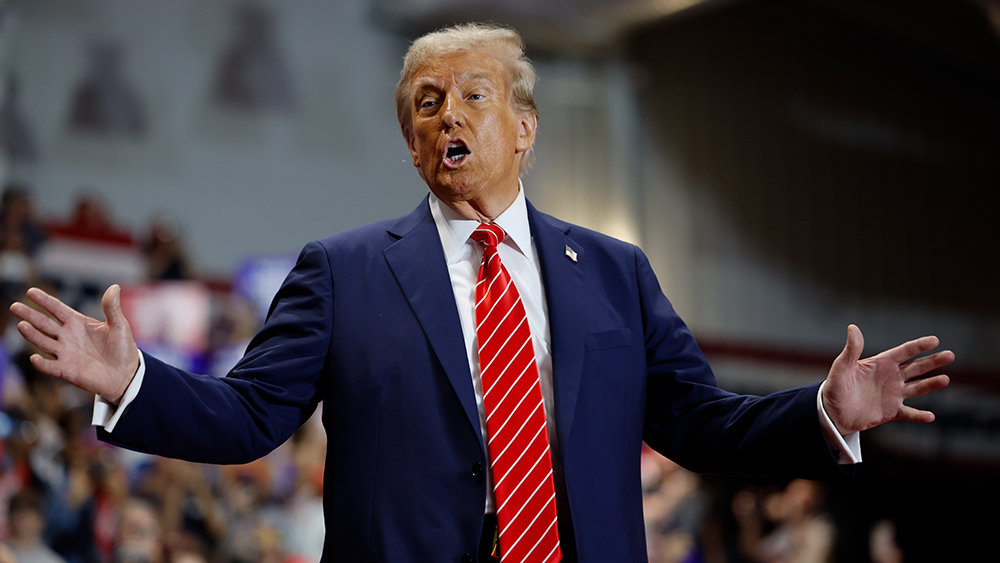
(Article by Francis Menton republished from ManhattanContrarian.com)
The Biden Administration is all in with the plan to get rid of the ICE car. Why? It seems to have something to do with the non-existent “climate crisis.” Meanwhile, Congress has passed no legislation authorizing the executive agencies to force ICE vehicles off the market. Nor is the Administration honest enough to admit that they are engaged in outlawing the vehicles that 90+% of the people drive.
Instead we get massive and thoroughly dishonest regulations effectively forcing the approaching end of the ICE vehicle without ever directly saying so. All with effective dates far enough into the future that the public will not notice that anything is happening in time for the upcoming election.
Two big new regulations on this subject have just gone final. First, there was EPA’s “Multi-Pollutant Emissions Standards for Model Years 2027 and Later Light- Duty and Medium-Duty Vehicles,” issued on April 18. And then yesterday from the NHTSA (part of the Department of Transportation) we get “Corporate Average Fuel Economy Standards for Passenger Cars and Light Trucks for Model Years 2027 and Beyond and Fuel Efficiency Standards for Heavy-Duty Pickup Trucks and Vans for Model Years 2030 and Beyond.” The first is 373 pages in the three-column, single-spaced format of the Federal Register. The second is 1004 pages in standard double-spaced typing.
If you should take the time to read some or all of the 1377 pages of text, don’t expect to find anywhere in all of that an admission that the plan is to suppress and ultimately eliminate the internal combustion car. Instead it’s happy sweet talk about the supposed “health” benefits of reducing greenhouse gas emissions. Here is an example from among many, this from page 27,844 of Volume 89 of the Federal Register:
EPA is establishing both criteria pollutant and GHG standards in this rulemaking given the need for additional reductions in emissions of these air pollutants to protect public health and welfare and based on EPA’s assessment of the suite of available control technologies for those pollutants, some of which are effective in controlling both GHGs and criteria pollutant emissions. Under these performance-based emissions standards, manufacturers have the discretion to choose the mix of technologies that achieve compliance across their fleets. EPA’s modeling provides information about several potential compliance paths manufacturers could use to comply with the standards, based on multiple inputs and assumptions (e.g., in what we have termed the central case, that manufacturers will seek the lowest cost compliance path).
“Manufacturers have the discretion to choose the mix of technologies that achieve compliance . . . .” Right. Everybody knows that the point of this is to force the majority of new car sales to be EVs or plug-in hybrids by some time in the early 2030s. But they’ll never say it straight.
And it’s the same with the new NHTSA Rule. This Rule sets new fleet-average fuel economy standards. NHTSA — aren’t they supposed to be in the business of “Highway Traffic Safety” (that’s the “HTS” part of their name)? Yes, but in the ultimate mission-creep, they are now the people behind the so-called “CAFE” (Corporate Average Fuel Economy) standards. Obviously, the people cannot be expected on their own to make appropriate trade-offs between fuel economy and other transportation needs (like carrying capacity). Thus, NHTSA now determines that beginning in the early 2030s, manufacturers must achieve average fuel economy for their fleets of 50+ miles per gallon.
But, you say, vehicles with internal combustion engines can’t achieve that figure if they are bigger than a thimble. Exactly. So here is a small piece of NHTSA’s justification:
Reducing gasoline consumption has multiple benefits – it improves our nation’s energy security, it saves consumers money, and reduces harmful pollutant emissions that lead to adverse human and environmental health outcomes and climate change. NHTSA estimates that relative to the reference baseline, this final rule will reduce carbon dioxide (CO2) emissions by 659 million metric tons for passenger cars and light trucks, and by 55 million metric tons for HDPUVs through calendar year 2050. Again, these relative reductions are greater if the rule is compared to the alternative baseline, but demonstrating a similar level of absolute carbon dioxide emissions.
You say that you have a need for a vehicle that can actually carry a couple of passengers and maybe a few suitcases? What kind of a traitor are you? Your options are to buy an EV or hire a ricksha.
The agencies know full well that they are forcing a transition to EVs that customers do not want. How fast must the forced transition be? This piece from Atlas EV Hub from March 25 estimates that EPA’s Rule by itself will force EV sales to be up to 69% of new vehicle sales by 2032:
The regulation is set to bring significant changes to the auto industry, potentially putting the United States on the glide path to full electrification. Manufacturers have several options to meet the new standards, and electric vehicles (EVs) will play a pivotal role in ensuring manufacturer compliance with these regulations. Under this final rule, battery electric and plug-in hybrid electric light-duty vehicles could make up 32 percent of all new vehicle sales in model year 2027, increasing to 69 percent by model year 2032.
The NHTSA CAFE Rule would require comparable, or perhaps even higher, percentages of EVs in manufacturer sales to achieve compliance.
Do you believe that the U.S. new vehicle market will switch over to mostly EVs so quickly over the next several years? I don’t believe it for a minute. So what happens when manufacturers produce mostly EVs to comply with these Rules, and then nobody will buy them? This could be very entertaining.
Read more at: ManhattanContrarian.com
Please contact us for more information.

















